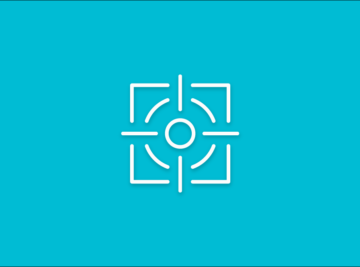Okay, if you’re pursuing an inbound marketing strategy for your tourism destination’s business then you know that you need to create high-quality content if you want your strategy to be successful.
Your inbound funnel is the engine that takes in anonymous visitors and turns them into leads and, eventually, customers. But to actually begin attracting those anonymous visitors, you need to offer them something that they want: And you can do this through blogging.
Why blogging, specifically? In the past we’ve talked about how blogging can help your tourism destination website grow your business, but I’ll give you a short answer here: Blogging is most likely the most effective way to attract visitors to your website, and it is how you will begin converting website visitors into leads, and eventually into customers who are booking rooms and visiting your location in person.
Sounds great, right? But how exactly should you go about creating a successful blog for your tourism business? By following the steps below, you can be sure that your blogging efforts will have a positive impact on your business.
1. Begin by conducting persona research.
If you want your blog to be successful in attracting visitors to your tourism destination’s website, then you need to make sure you understand your ideal guest persona. This is important because, by understanding who your target audience is and what they are interested in, you can use that knowledge to your advantage when writing your blog.
Free Guide: Inbound Marketing for Tourism
Everything You Need to Know to Increase Traffic, Capture Leads, and Gain More Customers and Bookings Through Your Tourism Destination’s Website
How? Well, the better you understand your customers, the more likely you will be able to write blog posts that better appeal to them. The more blog posts you write that directly appeal to your ideal guests, the more high-quality leads your website traffic will generate for your business.
Some of the questions that you need to answer when you are conducting your persona research are:
- Who is my ideal guest (in terms of demographics: Age, gender, education level, relationship status, career type, etc.)
- What kinds of keywords is my ideal guest likely to use when searching for information?
- What are the common questions that my ideal guest asks about my business? About my industry?
- What information does my guest need to know to make an informed decision regarding planning their vacation, trip, or stay?
- What type of content does my ideal guest like to consume? Text-based blog posts? Videos? Blog posts supplemented with video? Something else?
All of these questions will give you the information that you need to form a content strategy for your blog.
2. Create a content strategy for your blog.
For your blog to perform well, you need to make sure that your content is always created with purpose. That sounds easy in theory, but if you don’t have a content strategy for your blog, it can be difficult to keep yourself on track.
What is a content strategy? In short, it’s a plan for the kind of content that you will create for your blog. The essential components of your content strategy will include:
- A set of editorial guidelines, as well as a blog mission statement
- An editorial calendar, where you will plan out your content and your publishing schedule
- A plan for distributing your content (through social media, newsletters, etc.)
- A plan for analyzing your content’s performance, to make sure that you can make changes if something isn’t working.
Remember, when creating each of these components of your content strategy, it is important to reflect back on your persona research and the typical behavior of your ideal guest.
- Your editorial guidelines and mission statement should make sure that your content appeals to your ideal guest
- Your editorial calendar should match with your ideal guest’s behavior. For example, if your tourism destination has a busy season, your publishing schedule should pick up just before and during that busy season
- Your distribution plan should focus on the outlets that your ideal guest is likely to use. If your typical customer is a stay-at-home mom planning a family vacation, for example, you would probably want to focus on building up your Facebook presence while limiting or ignoring LinkedIn.
3. Help your content stand out from the competition.
In the grand scheme of things, your website is just one tiny drop in the massive ocean of the internet. If you want your content to be found and shared by prospective guests and customers, then you need to find a way to make your content stand out from the competition.
You can do this in a number of ways, and ultimately what will be successful to you will boil down to your business and the preferences of your guest personas. That being said, ways to help your content stand out are to:
- Answer the questions that your ideal guest needs in order to plan their trip or vacation, especially if your competition hasn’t already supplied an answer.
- Offer content that is truly unique.
- Supplement your blog posts with stunning images and/or video, especially if your competition doesn’t do anything besides text. Check out this list of free or cheap tools that you can use to make really unique content.
- Fall back on your own unique perspective while writing your blog posts.
Quality Matters
If you want your blog content to perform well in attracting visitors to your website and converting them to actual guests at your tourism destination’s business, then you need to take the time to actually create high-quality content. You can’t just churn out content and hope for the best; you need to put in the leg work, conduct the research, and generate content that deserves to be shared.
Once you do that, you’ll be surprised at how easily your blog content will begin attracting visitors to your website and, eventually, your physical location.









